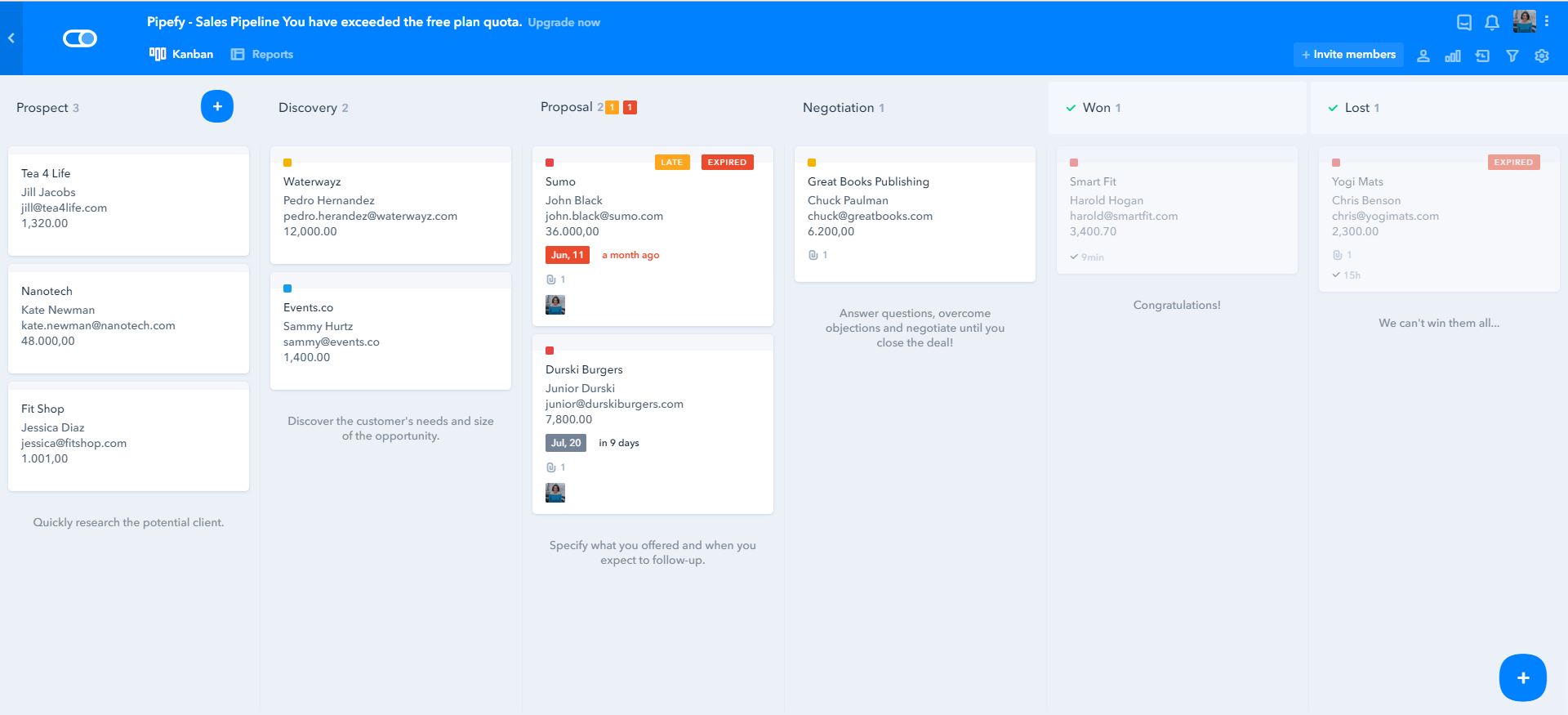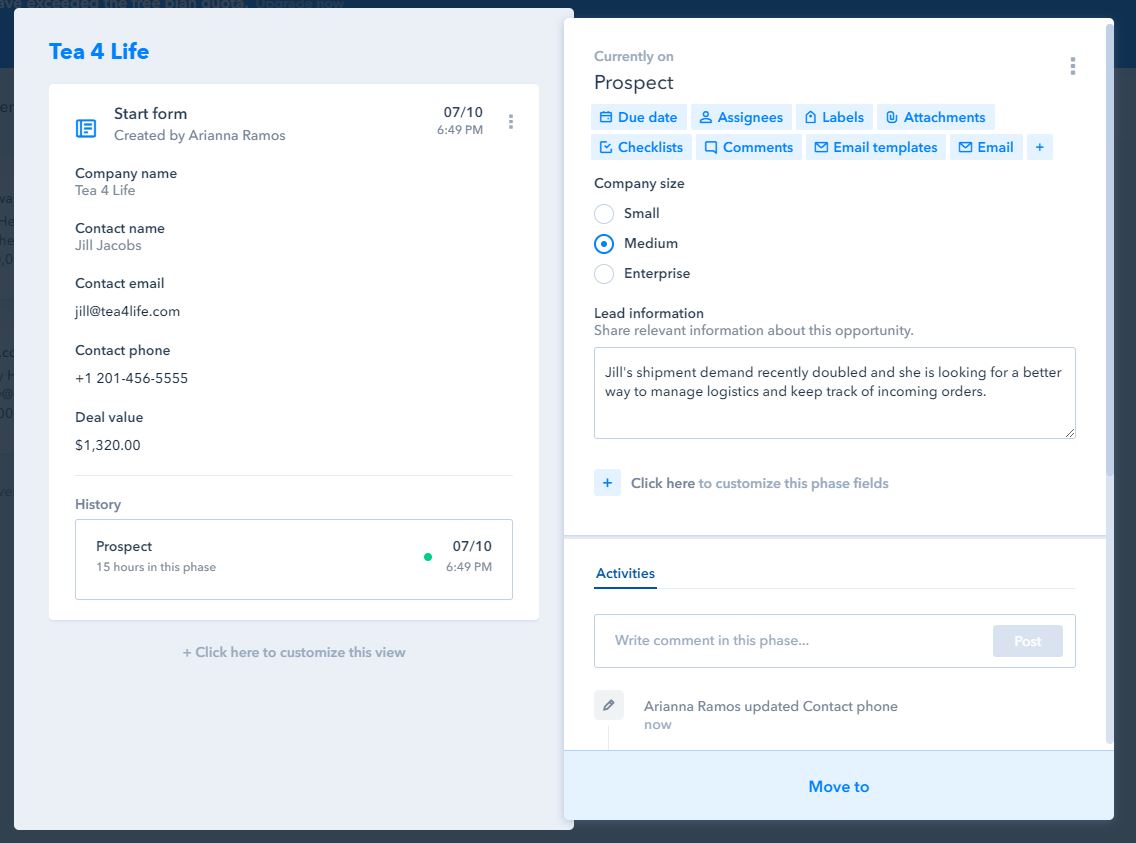ARTICLE SUMMARY
Pipefy’s Sales Pipeline Template is a step-by-step process, specially developed to enhance your team’s focus and productivity.

Whether you’re a Pipefy conoisseur or this is your first visit here (welcome!), it should come as no surprise that we offer awesome process templates to help you manage your company. One of these is our incredible, one of a kind Sales Pipeline Template, specially developed based on the market’s best practices to revolutionize (is that even a word?!) the way you manage your sales pipeline.
Don’t believe me just yet? That’s ok, I’ll reserve you the right to be a little skeptical at first, but I’m pretty positive Pipefy’s Sales Pipeline Template will sweep you off your feet and make you see your pipeline under a different light.
To begin with…what is a Sales Pipeline?
A sales pipeline is the “big picture” of your company’s sales process: a clearly defined sales pipeline will include all your sale’s steps and will be able to show you how many leads are entering and how much of those are actually converting into paying customers/sales.
For some people, it helps to visualize the sales pipeline as a funnel with multiple stages or, as we like to call them here at Pipefy, phases. The funnel analogy works because the natural workings of the pipeline imply the number of leads entering will be a lot larger than customers exiting, hence the narrowing of the funnel.
Why use Pipefy’s Sales Pipeline Template?
Pipefy’s Sales Pipeline Template begins with a phase called Prospect – this is where all incoming leads and opportunities your team create will be gathered. On Pipefy, each opportunity will be a new card created using a simplified form: Name (of the person/contact responsible for the lead), Company and Email.
Then, before the lead can move on to the next phase, there are two things you’ll have to do: a quick initial research about the lead and assign it to a sales representative.
To help you know what you need to research about the lead, we’ve put together a quick guide with all the relevant information you should look for, as well as where you can find it.
After you’ve filled in that preliminary information, you’ll move on to the Discovery phase – this is the step where you’ll qualify your leads, determine the customer’s needs and analyze whether they’re fit for your business.
This phase is also where you start to trace a preliminary proposal, determining what you plan to offer this specific customer according to his/her needs.
The next logical – and actual – phase of our sales pipeline template is the Proposal: in this phase you’ll input all the information of the actual proposal (value, date it was sent on, you can even attach the document you sent the customer for further consultation) and, if you wish to, you can set a reminder for when you need to follow up on this opportunity.
After the proposal is sent, the opportunity cards go to the Negotiation phase, where your sales representatives will be responsible for answering your customer’s questions, overcoming their objections and negotiating their hats off until they can close the deal.
When the cards reach the end of the pipeline, they can have one of two outcomes: they can either go to the Won phase (yay, closed deals!) or to the Lost one – that’s ok, you can’t win all the battles.
To sum things up…
Start using Pipefy’s Sales Pipeline Template today!
Pipefy’s Sales Pipeline Template is a step-by-step process, specially developed to enhance your team’s focus and productivity. It’ll guide them through all the steps of the sale: from prospecting, to properly qualifying hot and cold opportunities all the way to effectively closing the deal.
Instead of resorting to fragile spreadsheets or complex and expensive CRM systems, get Pipefy’s sales template for free today and run your sales pipeline smoothly and without any concerns.









